Monday, January 4th, 2021 by Julian Karsunky
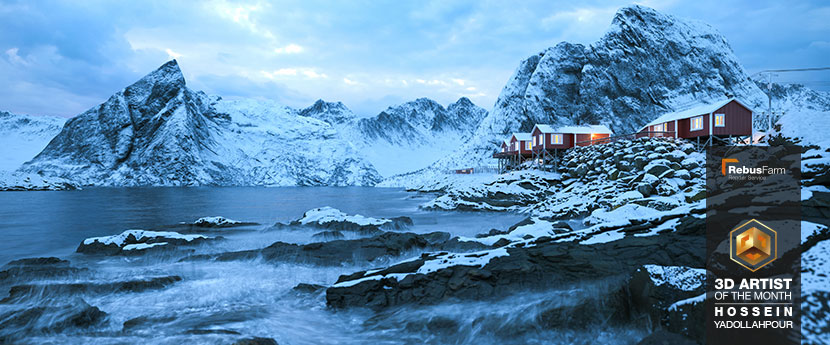
The new year is finally upon us, and while the whole world eagerly awaits change, there is also some comfort to be found in the familiar. As such, we are proud to announce the continuation of our 3D Artist of the Month campaign. Fitting with this theme, kicking off the cycle in January 2021 is Hossein Yadollahpour, a face familiar to our regular readers. Though geographically far removed from the arctic circle, the Iranian archviz artist was inspired to create a series portraying the Norwegian Lofoten archipelago with its beautiful snowy landscapes, spectacularly illuminated by the northern lights.
In our interview, Hossein shares ten tips for aspiring artists and talks about virtual sightseeing, efficient scene management and remaining positive despite hardships.
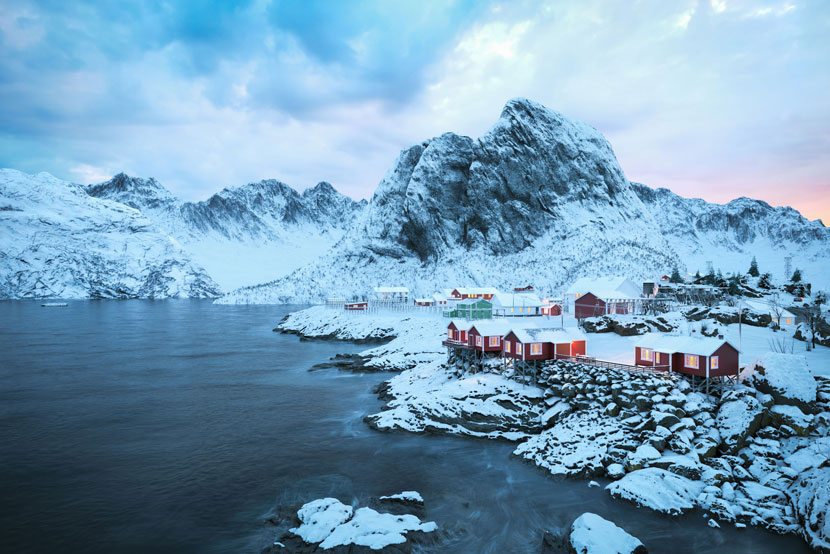 The juxtaposition of the cozy cabins and their seemingly inhospitable surroundings makes for an unparalleled atmosphere. The Lofoten Island, Norway, as portrayed by Hossein Yadollahpour.
The juxtaposition of the cozy cabins and their seemingly inhospitable surroundings makes for an unparalleled atmosphere. The Lofoten Island, Norway, as portrayed by Hossein Yadollahpour.
Hi Hossein, we’re so glad to have you back, thanks for joining us again! For those who might have missed our last interview, please introduce yourself once more for our readers!
Hello and happy new year! My name is Hossein Yadollahpour, I was born in Iran in 1990. I studied at the University of Architecture and I have been working in the CG industry for many years. In short: I love art, and I’m glad to be at your service once again!
Last time we spoke, you were managing your own studio in Qaem Shahr. How has your job situation changed since then, if at all?
I am still managing my own small studio, and I continue to learn, gain experience, get better and grow every single day.
My clients are usually architects, architectural simulation studios, sometimes animation studios, or, in more broader terms: any person or company who wants to display a product or showcase an idea.
How are you holding up in these trying times? Has the current crisis impeded your work?
Since the beginning of the pandemic, we all have been almost exclusively working remotely. Telecommuting is obviously something we’re used to, but it has become much more serious.
Of course, as someone based in Iran, I generally must deal with many restrictions, but I have never focused on limitations in the past and I try to remain hopeful and keep working hard now as well.
Do you have any long-term goals? Do you have a dream job, whether it’s a specific position or a certain company you admire?
While dreams give important meaning to human life and allow us to strive and push ahead even when faced with hardships, I personally don’t want to disclose my own dream, as I feel I have more energy working on it in secret. But to answer your question in a more general sense, as a person who loves art, one of my goals is to create effective and inspiring works of art – works that are timeless and indelible.
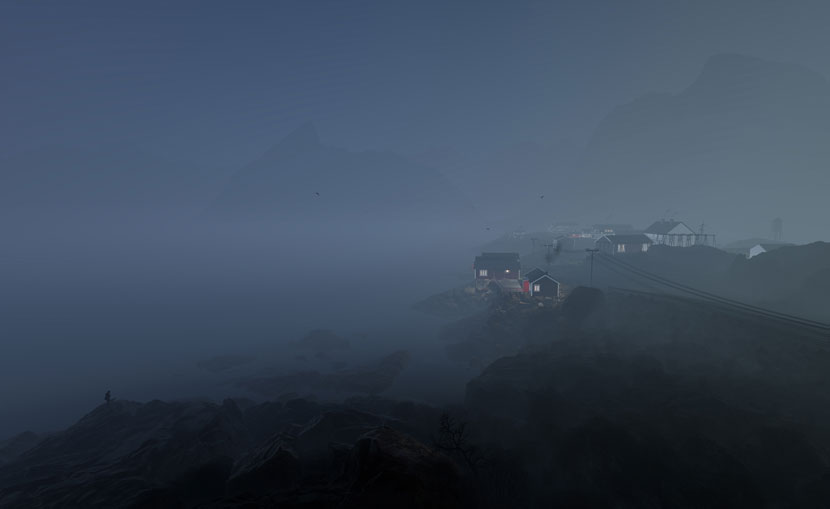 What started as a learning experience for snow-covered landscapes, Hossein soon felt inspired to expand the project by adding more scenes.
What started as a learning experience for snow-covered landscapes, Hossein soon felt inspired to expand the project by adding more scenes.
Without further ado, let us then talk about your art in more detail, namely one of your latest personal projects, a series of images depicting the Lofoten Islands, Norway.
Can you first describe the circumstances that lead to the creation of this project? What attracted you to this landscape?
My personal work is without a doubt my favorite creative outlet, so I am constantly searching for inspiration, always viewing potential subjects through the lens of artistic curiosity. One day, I stumbled upon photos of this small Norwegian village while browsing the internet. I was immediately impressed by the simple and lovely cabins and even more so by the surrounding area, with a diverse and beautiful atmosphere and spectacular lighting.
Considering you are geographically far removed from the arctic circle, how do you approach recreating a place seemingly so foreign to your own experience?
It’s not an easy task, but this is exactly what we are expected to do! Thanks to the internet, you can virtually visit anywhere in the world, and realize projects regardless of your own location. In fact, an experienced CG artist should be able to understand and subsequently convey the feeling and mood of a place with only a few pieces of information available.
Everyone probably has their own way, but here’s a brief look at my project formation process: first, I try to gather as much data as possible, from reference images and videos, Google Earth footage, information about the climate, culture, and architecture of the area. If there is a memorable movie set in the region or local music that might help attain a better understanding, I will immerse myself in that as well.
Once I have attuned myself enough to the place, I relax, close my eyes, and let my imagination take over. I visualize that area and myself in it, then ask myself: what would the best sensory experience to make here?
What parts of the images were especially important to you and what were some of the challenges you had to overcome?
From the beginning, I knew that this project would be particularly challenging, because I wanted to perfectly replicate the magic of the region. But having never been there, and with precise data about dimensions and such surprisingly scarce, I had to solely rely on the few references available to me!
Then on the technical side, the project included simulating liquids with splash and foam, rocks and mountains covered with snow and more, all on a rather large scale. It took me about two months of working in my spare time to complete the project.
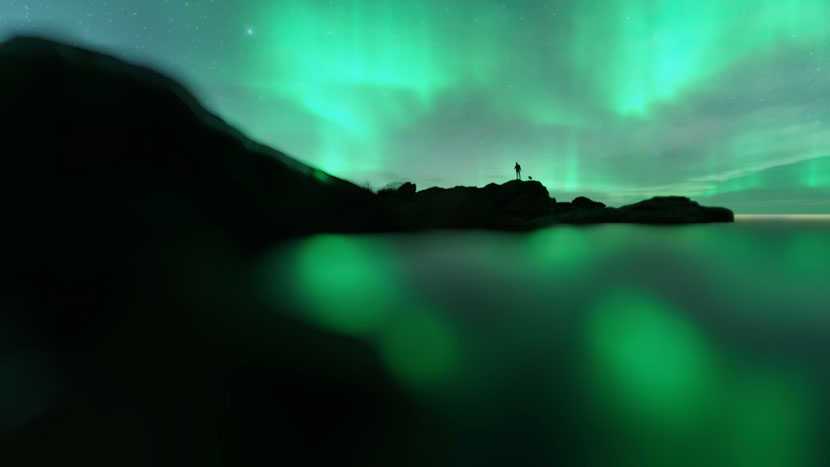 The third scene of the series is illuminated by aurora borealis and its reflection on the sea surface.
The third scene of the series is illuminated by aurora borealis and its reflection on the sea surface.
Once you had a basic concept in mind, how did you approach realizing it? Can you briefly walk us through the development process?
Well, after closely reviewing all reference material I gathered, I usually start by creating a basic low-poly model of the entire scene. This early, I make a conscious effort to include as little details as possible, to not overload the scene. This not only helps to prevent losing control of the project, but I also find this to be the best approach in terms of time and project management in general. Having modeled the whole scene in this manner, I create a simple light until everything can be seen properly. Then, I put the camera in and frame the scene. Now, I start to arrange our scene with the raw models, adding details with each step and iteration, so modeling, lighting, shading, and so on.
Things are always prone to change in one way or another, but my workflow usually goes like this. Once I have my final rendering, I finish the job with a series of light and color corrections in post-production.
Corresponding to the arctic environment, you created a lot of different and intricately lit settings. Was the project intended as a series from the start or did it take on a life on its own during development?
Since I previously did not have any notable experience with snowy environments, I initially started with the snowy scene, as I thought that would make for a great learning experience. However, the more I learned to manage the scene, the more I realized the vast potential of the setting. From there, the project naturally grew bigger and bigger.
Tell us a bit more about the individual scenes and their respective lighting settings.
There are three different scenes in total. First, a scene where the light of aurora borealis is reflected on the calm water, illuminating the beautiful landscape. Next, we have a scene depicting a person who is walking his dog looking upon the warm cabins. To further emphasize this opposition between the outside and inside, I chose distinct color palettes and contrasted the cool, foggy air with the cozy smoke rising from the cabins. The third and final scene shows the entire area covered with snow. Between the ragged mountains, the relentless tide and the cold snow, the forces of nature are portrayed more intensely.
Of course, the landscape holds infinitely more potential than captured in just these three scenes. Originally, my goal was to have a more diverse series of images, I had even planned a short animation. Unfortunately, due to my workload and the resulting time constraints, I could not fully realize all my ideas and had to eventually finish the project for the time being.
Are you satisfied with the results? What has the feedback been like?
Publicizing my work is always an exciting moment, as you’re eager to see immediate and genuine reactions. Fortunately, this project was featured by many reputable sites, and not only did I receive many kind comments, but I was also even able to meet new clients!
Most interesting to me were the comments of people who were familiar with the landscapes, either by being from Lofoten or the surrounding area directly or by having travelled and spent time there. To my great delight, they described the imagery as very faithful to the actual experience! And finally, considering this project has directly led to this interview, how could I not be pleased with the results!?
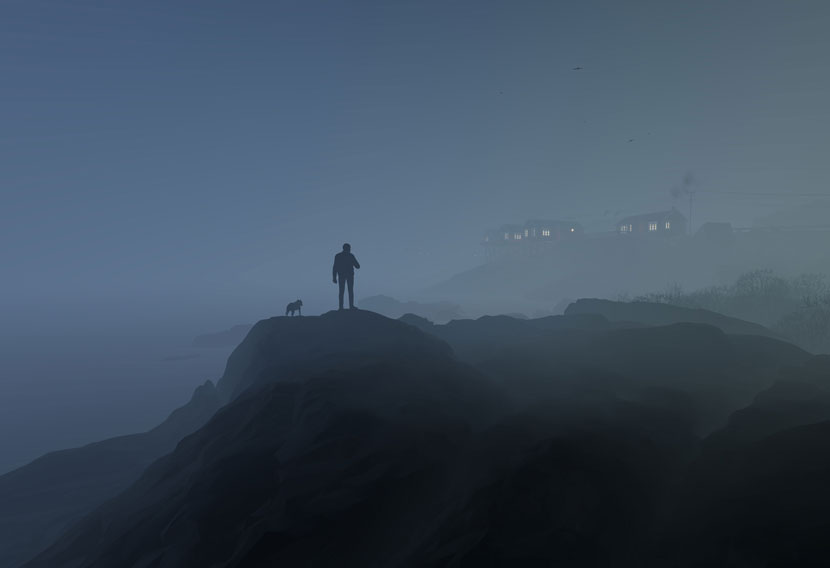 Wanderer above the sea of fog: emerging from the barren, ragged landscape makes these cabins appear that much more inviting.
Wanderer above the sea of fog: emerging from the barren, ragged landscape makes these cabins appear that much more inviting.
What software did you use to create this project? Any plug-ins you found particularly helpful?
My basic software is 3ds Max, and I used ZBrush to give details in modeling, World Machine to model the mountains, and Phoenix FD to simulate liquids. To simulate snow, I made use of various techniques and tools, the most important of which were the SnowFlow and PolySnow plug-ins. Furthermore, I used Corona Renderer for well, rendering, and Photoshop was my tool of choice for everything post-production.
However, these are just the main programs and plug-ins I worked with; the actual list is even longer. To name a few more, Speedtree, Forest Pack, Frost, Quixel Megascans, and Substance Painter have also helped shape this project.
What is one thing you have learned from this project that you can share with us?
I believe that scene management is crucial, especially for large projects. Details should therefore be added carefully and following an established logic, otherwise, a scene can become very hard to control very fast!
Thankfully, there is a multitude of ways to help with scene management, such as optimizing the models, proxying the fully detailed models, copying as an instance, using professional scatters like Forest Pack and MultiScatter, and choosing the right size and quality for textures. There are tools such as certain SiNi Software plugins that can further help managing your scene. Although, when it comes to scene management, as with everything else, the most important thing is experience!
Looking at your portfolio, nature seems to play an increasingly integral part in your personal work. How would you describe your understanding of the relation between nature and architecture?
Well, I love nature, it helps me keep my stress levels in check and inspires me in countless ways. As an autodidact, nature has always been my best teacher. I think paying attention to nature enables us to create and convey more real, artistic, and emotional works. Nature is an endless source of information and inspiration that is indiscriminately and immediately available to everyone!
Earlier, you already alluded to the importance of personal projects for you as a CG artist. Can you elaborate a bit on this point?
Personal projects allow me to move away from the limited, sometimes even boring space of business and create something perfectly suited to my liking. At the same time, personal projects are a great opportunity to either showcase specific skill sets or seek out new challenges and improve in additional areas. Finally, oftentimes I am either not allowed to publish commissioned work or I myself might decide against it, so personal projects have always been a great opportunity to build my portfolio and attract new clients.
For all these reasons, I always make time for personal projects, and try to strike the right balance between challenging and enjoying myself.
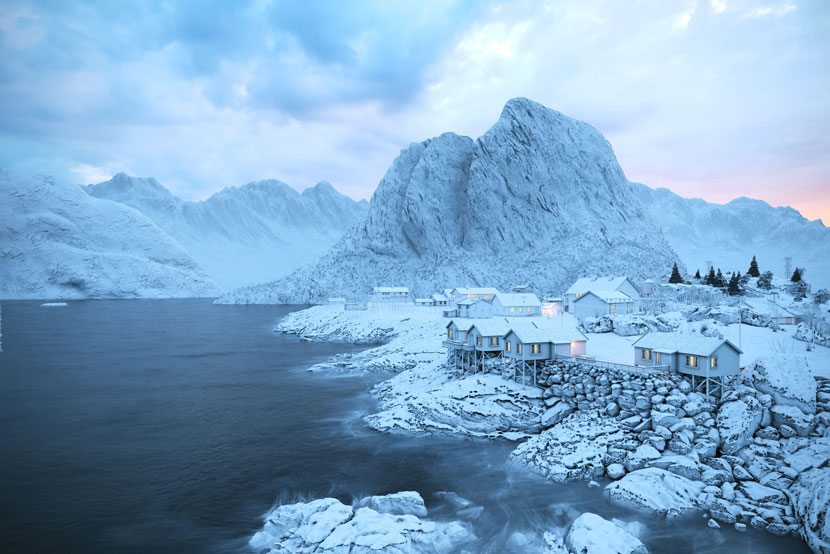 With proper planning, Hossein makes sure his scene is manageable at every stage of the process. This iteration mostly lacks color and overall detail.
With proper planning, Hossein makes sure his scene is manageable at every stage of the process. This iteration mostly lacks color and overall detail.
Reflecting upon your career up to this point, what is some advice you would give to aspiring artists?
A good archviz image is the combination of technical skills and artistic creativity. Given the rapid technological advancements, achieving a realistic image is the least of what is expected from a good archviz work today. What separates a good from a great work, is then mostly creative thinking and artistic ability. As a result, the importance of aesthetic principles such as photography and composition techniques, harmony and coloring of images, storytelling devices and more will only increase in the future.
That being said, here are ten general tips I came up with:
1. As this is an ever-changing, highly competitive industry, make a continuous effort to keep pace with developments and try to learn new things frequently. Personally, I think the day we feel we have nothing left to learn is the day of our death!
2. Learn different software, but don't confine yourself to them, because they are just tools. The most important thing is to improve your artistic skills.
3. Challenge yourself, look for new experiences and don't be afraid of change.
4. Always assign some time for personal work alongside business. There are no limitations to your self-imposed projects, so have fun while improving your skills.
5. Publish your work, be open to criticism and don't get discouraged. To improve, we need criticism as much as we need compliments!
6. Use every opportunity to introduce yourself and promote your work! Virtual networks, specialized sites and offline and online communities are valuable and for the most part free assets, so make good use of these resources. In a globalized world, you can attract clients from all corners of the earth.
7. Try to connect with successful people and learn from their experience!
8. Avoid arguing with clients. Provide suggestions, but do not insist on doing things your way. The customer is always right, acting out against this principle is a sure way to lose business.
9. You only can take on so many jobs at once, so try to choose the most promising ones when options are available.
10. Simply working hard is not enough, you have to be smart about it, too!
Please tell us about your previous experience with RebusFarm. Is there anything you especially like about our service?
In addition to the excellent service it provides to its customers, the things that have always distinguished RebusFarm from its competitors to me, are the outstanding support structure and the community orientation. Sharing your success by supporting CG artists, studios and events in multiple ways lends RebusFarm a certain credibility that is hard to come by.
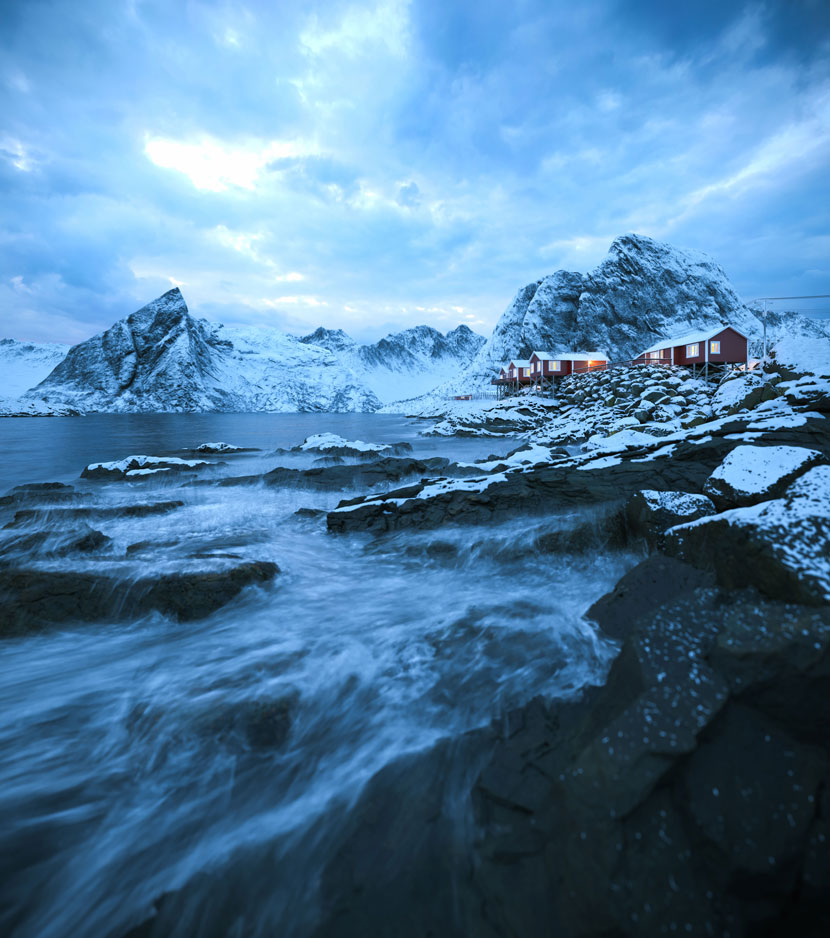 While environments are always important, archviz artist are usually more focused on architecture. In this personal project, the man-made structures clearly take second place to the forces of nature.
While environments are always important, archviz artist are usually more focused on architecture. In this personal project, the man-made structures clearly take second place to the forces of nature.
In closing, is there anything else you want to say? Any present or upcoming projects you would like to mention?
I have several unfinished projects in the works, but I don't want to give too much away at this point.
While I will most definitely continue my personal work and already have several ideas, I have no particular project to announce at this moment. Now, I don't know if I will ever make another return on your blog, but who knows, maybe someday we will have the chance to talk about these projects.
But for now, thank you very much for giving me this opportunity, it was a great honor for me. I hope RebusFarm continues its successful way.
The pleasure is all ours. Hossein, thank you so much for taking the time and all the best in the future!
Keep up with Hossein Yadollahpour and his work here:
HOW TO JOIN OUR MONTHLY CONTEST
You want to be our next featured 3D Artist of the Month and win 250 RenderPoints? Just visit our 3D Artist of the Month competition page and submit your entry. We'll choose the best image and contact the winner.
>> Read more articles on our blog
